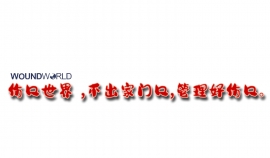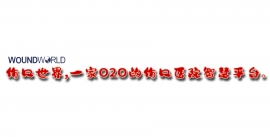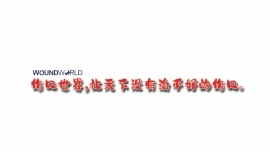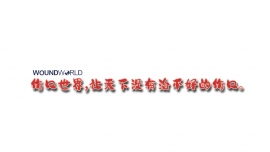文献精选
Harikrishna K. R. Nair Citation: Nair HKR (2024) Effectiveness of combination of silver gelling fibre with foam dressing in diabetic foot ulcer: a case series. The Diabetic Foot Journal 27(1): X-X
Key words
- Diabetes foot ulcer infection
- Silver gelling fibre
- Foam dressing
- Case series
Article points
1. Case series to demonstrate the effectiveness of silver gelling fibres in combination with foam dressing
2. Good healing rates were found with use of this combination
3. Infection prevention combined with exudate management were key benefits to this treatment regimen.
Authors
Harikrishna K. R. Nair is Professor and Head of the Wound Care Unit, Department of Internal Medicine, Kuala Lumpur Hospital, Malaysia
This case series demonstrates the effectiveness of using silver gelling fibres in combination with a foam dressing for the treatment of diabetic foot ulcers.
Sleep quantity, quality and timing are significantly associated with the development of type 2 diabetes and have an impact on glycaemic control and cardiovascular disease risk in those with established diabetes, according to this narrative review in Diabetes Care. The authors are concerned that, although clinicians commonly explore physical activity and diet with people at risk of or with type 2 diabetes, they are less likely to ask about sleep. They outline normal sleep structure, share four simple questions to elicit sleep status and summarise the data supporting the role of sleep within the “5S” framework of 24-hour movement (Sleeping, Sitting, Stepping, Sweating and Strengthening) included in the ADA/EASD consensus report on the management of hyperglycaemia in type 2 diabetes. They also share the evolving evidence base supporting the association between sleep and type 2 diabetes, describe how to assess sleep and manage sleep disorders, and advise on helping people set simple goals. It is hoped this will translate into more clinicians spending time discussing sleep in future.
Pam Brown GP in Swansea
Citation: Brown P (2024) Optimising sleep – simple questions and goals. Diabetes & Primary Care 26: 99–101
Intermittent fasting comprises a variety of dietary patterns in which eating and fasting are cycled over a regular period, with potential benefits in terms of body weight and metabolism. This factsheet covers the definitions, benefits and risks of intermittent fasting, and provides tips for supporting people who wish to adopt these patterns. Most research on intermittent fasting has been conducted in people with overweight or obesity, with or without diabetes. Many healthy-weight people are also interested in these diets; however, in this group, research shows minimal metabolic improvements and, concerningly, reductions in physical activity and lean body mass.1
Amy Sherratt, Jennie Hancox, Frances Game and Katie Gray
Citation: Sherratt A, Hancox J, Game F, Gray K (2024) Does the point-of-healthcare contact affect successful diagnosis of diabetic Charcot neuroarthropathy? The Diabetic Foot Journal 27(2): 44–8
Key words
- Charcot
- Diabetes
- Delay
- Foot
- Misdiagnosis
Article points
1. Delays in diagnosis increase the risk of severe long-term foot complications
2. A retrospective audit of patients with active Charcot neuroarthropathy examined the time to diagnosis, misdiagnosis rates, healthcare professional (HCP) and setting type at each contact, since symptom onset prior to their referral to a multidisciplinary foot team (MDFT) clinic
3. Results showed that non-specialist HCPs require a greater degree of awareness and understanding of Charcot neuroarthropathy to reduce diagnostic delays and misdiagnosis rates.
Authors
Amy Sherratt is a Diabetes Specialist and Research Podiatrist, University Hospitals of Derby and Burton & Derbyshire Community Health Services, Derbyshire; Jennie Hancox is a Lecturer at Loughborough University, School of Sport, Exercise and Health Sciences; Frances Game is a Consultant Diabetologist and Director of Research and Development, University Hospitals of Derby and Burton, Derbyshire and Katie Gray is a Diabetes Specialist and Research Podiatrist, University Hospitals of Derby and Burton & Derbyshire Community Health Services, Derbyshire.
Background: Charcot neuroarthropathy (CN) is a lesser-known and commonly misdiagnosed diabetic foot complication. Delays in diagnosis increase the risk of severe long-term foot complications. Aims: To undertake a retrospective audit of patients with active CN, recording the time to diagnosis, misdiagnosis rates, healthcare professional (HCP) and setting type at each contact since symptom onset prior to their referral to a multidisciplinary foot team (MDFT) clinic in a circumscribed part of England. Methods: Clinical notes of 46 consecutive patients attending a MDFT clinic in the East Midlands region of England during a 2-month period, with active CN were assessed. Results: Of the 46 included patients, 22 developed CN while in primary care. These patients had a mean time from symptom onset to confirmed diagnosis of 68 days, with 64% receiving a misdiagnosis. Non-specialist HCPs failed to suspect CN in 85% of contacts compared to 20% in specialist HCPs. Conclusions: Non-specialist HCPs need a greater degree of awareness and understanding of CN to reduce diagnostic delays and misdiagnosis rates.




